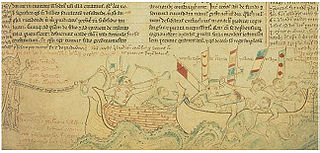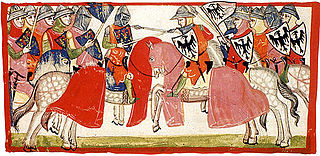The 1160s was a decade of the Julian Calendar which began on January 1, 1160, and ended on December 31, 1169.
Year 1204 (MCCIV) was a leap year starting on Thursday of the Julian calendar.
The 1310s was a decade of the Julian Calendar which began on January 1, 1310, and ended on December 31, 1319.
The 1380s was a decade of the Julian Calendar which began on January 1, 1380, and ended on December 31, 1389.
The 1100s was a decade of the Julian Calendar which began on January 1, 1100, and ended on December 31, 1109.
The 1350s was a decade of the Julian Calendar which began on January 1, 1350, and ended on December 31, 1359.
The 1360s was a decade of the Julian Calendar which began on January 1, 1360, and ended on December 31, 1369.
The 1420s decade ran from January 1, 1420, to December 31, 1429.
The 1210s was a decade of the Julian Calendar which began on January 1, 1210, and ended on December 31, 1219.
The 1240s was a decade of the Julian Calendar which began on January 1, 1240, and ended on December 31, 1249.
The 1260s is the decade starting January 1, 1260 and ending December 31, 1269.
Year 1344 (MCCCXLIV) was a leap year starting on Thursday of the Julian calendar.
Year 1340 (MCCCXL) was a leap year starting on Saturday of the Julian calendar.

Year 1319 (MCCCXIX) was a common year starting on Monday of the Julian calendar.

Year 1217 (MCCXVII) was a common year starting on Sunday of the Julian calendar.

Year 1263 (MCCLXIII) was a common year starting on Monday of the Julian calendar.

Year 1266 (MCCLXVI) was a common year starting on Friday of the Julian calendar.

Haakon IV Haakonsson, sometimes called Haakon the Old in contrast to his namesake son, was King of Norway from 1217 to 1263. His reign lasted for 46 years, longer than any Norwegian king since Harald Fairhair. Haakon was born into the troubled civil war era in Norway, but his reign eventually managed to put an end to the internal conflicts. At the start of his reign, during his minority, Earl Skule Bårdsson served as regent. As a king of the Birkebeiner faction, Haakon defeated the uprising of the final Bagler royal pretender, Sigurd Ribbung, in 1227. He put a definitive end to the civil war era when he had Skule Bårdsson killed in 1240, a year after he had himself proclaimed king in opposition to Haakon. Haakon thereafter formally appointed his own eldest son, Haakon the Young, as his co-regent.

Eric XII was King of Sweden and lord of Scania in 1344–1359. He was a co-ruler with his father, King Magnus Eriksson, from 1356 until his death in 1359.
This chronology presents the timeline of the Northern Crusades beginning with the 10th century establishment of Christian churches in northern Europe. These were primarily Christianization campaigns undertaken by the Christian kingdoms of Denmark, Norway and Sweden together with the Teutonic Knights, primarily against the pagan Baltic, Finnic and West Slavic peoples around the southern and eastern shores of the Baltic Sea.





